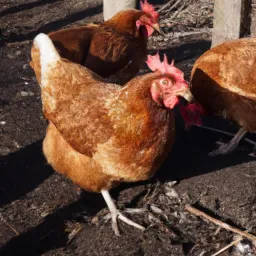The Surprising Facts about Egg-Laying Abilities of Rhode Island Reds
Rhode Island Red chickens are a popular breed among poultry farmers and backyard enthusiasts due to their egg-laying abilities.
These birds have been around for over 100 years, originating in the state of Rhode Island in the late 1800s.
They were developed by crossing several different breeds including Barred Rocks, Buff Orpingtons, and White Leghorns.
The result was a bird that could produce large amounts of eggs with consistent color and size. Let’s take a closer look at some surprising facts about these fascinating creatures:
Egg Color
One of the most notable traits of Rhode Island Reds is their distinctive egg color.
Their eggs are known for being a bright red-orange shade, which makes them easy to identify.
This unique trait is due to the high levels of beta carotene found in the chicken’s diet. Beta carotene is also responsible for giving carrots their orange hue.
Egg Production
Another impressive characteristic of Rhode Island Reds is their ability to lay eggs consistently throughout the year.
On average, they can produce between 250 and 300 eggs per year.
That’s almost one egg every day!
However, their egg production does tend to slow down during the winter months when days are shorter and temperatures are colder.
Breed Characteristics
In addition to their egg-laying abilities, Rhode Island Reds are known for their friendly and docile personalities.

They are generally easy to handle and make great pets for families with children. They are also good mothers and will protect their chicks from predators.
Another interesting fact about this breed is that they come in both standard and bantam sizes, making them suitable for both small and large-scale operations.
See also How to Make an Automatic Chicken Waterer
Pet or Meat Chicken
While Rhode Island Reds are primarily used as egg layers, they can also be raised for meat. Their lean flesh tends to be mild in flavor and juicy in texture.
However, because they are such productive layers, many people prefer to keep them as pets rather than use them for food.
Lifespan and Cold Hardiness
On average, Rhode Island Reds can live for up to ten years.
However, with proper care and nutrition, some individuals may live even longer.
Additionally, these birds are relatively cold-hardy and can tolerate harsh weather conditions better than other breeds.
In fact, they are often used in commercial egg production facilities located in colder climates.
